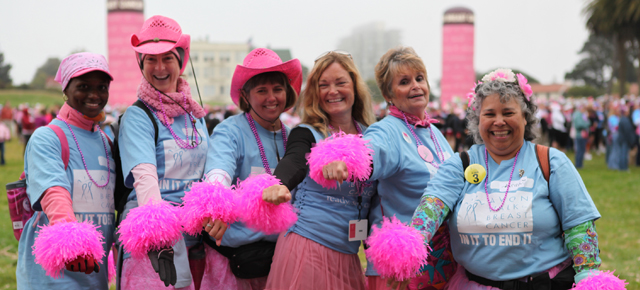
Using Pink Ribbons Inc. To Discuss Cause Marketing With Post-Secondary Students
Using Pink Ribbons Inc. To Discuss Cause Marketing With Post-Secondary Students
The following is a guest post by Elana Cooperberg
My maternal grandmother had breast cancer. My mother has had breast cancer. I was young, still a teenager, when my grandmother was diagnosed with it. I felt detached and distant from the events that played out around me. I lived in the world of the present and the future, which was limitless and full of potential. The notion of genetics hardly played a role in my life. The only significance genes had was that they offered clues to some of my predisposed characteristics and physical attributes. Blue eyes, curly hair, argumentative nature, and strong sugar addiction. For me, this was the relative importance of genetic code.
I was a mother of three girls when my mother was diagnosed with breast cancer many years later. I felt indignant. How could this happen to my mother? Am I going to get breast cancer? What about my children? I behaved in a way that was typical of someone impacted directly by cancer. I joined the cause. I supported Pink Ribbon campaigns. I registered myself, my mother, my aunt, and my three children for the five-kilometre breast cancer walk. It was a powerful event. It made us feel, if not in control, part of a bigger movement in which there was awareness, understanding, and power to change the future course of all young women’s lives.
The following year we walked again. This time something felt different. It felt too big, too loud, too overdone. There were hordes of people. So many people that we had to slow our pace. Pink balloons, pink t-shirts, pink banners… pink was everywhere, as far as the eye could see. It didn’t resonate with me the way it had the first time we participated.
And then I watched the documentary Pink Ribbons, Inc.
I wept. And then wept some more. I felt the same indignation I had experienced at my mother’s diagnosis. What have we been doing? What are we doing? Are we effecting change or simply buying in, quite literally, to the hype of Pink Ribbons and the breast cancer movement?
Pink Ribbons Inc., Léa Pool, provided by the National Film Board of Canada
Lucky for me I teach marketing at the college and university levels. I thought, What a great opportunity to have students screen the film and open a dialogue on cause-related marketing and the Pink Ribbons movement. I don’t believe we teach enough marketing ethics in business school. I think this contributes to the overwhelming negativity bias towards marketing in the general population. Certainly it doesn’t do anything to help the situation.
Well, I would make my small contribution and have students critically examine the benefits of cause-related marketing by analyzing the effectiveness of the Pink Ribbons campaign. I was so moved by the film, how could my students not be? That hypothesis proved correct. Screening Pink Ribbons, Inc. in the classroom raised several issues for students and highlighted the power of marketing. And it also raised this question: How can we use marketing to create change? Real change. Not fake, pink, fluffy change. Not change that doesn’t question, but change that is open, transparent, and inclusive. If marketing could move so many women to become active participants in the breast cancer cause, can we not use marketing to increase awareness about the critical issues raised in the film?
My goal for my students was to have them understand how much power they can wield as consumers, as members of a community, as part of a movement. I want them to realize how important it is to ask questions and be conscious of their choices. I want them to have the conviction in their professional lives as marketers to feel indignation and work towards changing that which they feel can be better. And then make it better. For all of us.
Download the Teaching Guide for Marketing Educators written by Dr. Peggy Cunningham, Dean, Faculty of Management, Dalhousie University.
***
Elana Cooperberg has over 15 years in the corporate world in management positions in marketing, promotion, and production. She has been teaching in the marketing department of Montreal and Ontario based universities and colleges for over 20 years.




